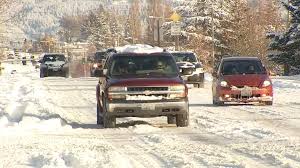If you’re planning to head out today, you’ll want to check the latest snow emergency levels first. Several counties in Ohio have declared snow emergencies as winter weather intensifies, making roads hazardous and reducing visibility.
With snow continuing to fall and ice forming on untreated surfaces, local officials are urging residents to take precautions and stay off the roads unless absolutely necessary. But what exactly does a snow emergency mean, and how does it affect you? Here’s a breakdown of what you need to know.
Which Counties Are Under a Snow Emergency?
As of this morning, multiple Ohio counties have issued snow emergencies due to worsening road conditions:
- Level 1 Snow Emergency: Franklin, Delaware, Licking, Fairfield, Pickaway, Madison
- Level 2 Snow Emergency: Clinton
This list may change throughout the day as conditions evolve, so it’s important to stay updated on local alerts.

What Do the Different Snow Emergency Levels Mean?
If you’ve ever heard the term “snow emergency” but weren’t sure what it meant, here’s a simple breakdown of Ohio’s three-tiered system:
- Level 1: Roads are hazardous, with snow and ice making travel difficult. Drive slowly and cautiously if you must go out.
- Level 2: Roads are very dangerous, with blowing snow and ice patches causing potential accidents. Only essential travel is advised, and you should avoid driving unless absolutely necessary.
- Level 3: Roads are closed to non-emergency vehicles. If you drive during a Level 3 emergency, you could be subject to fines or even arrested unless you are an essential worker.
Right now, most of the affected counties are at Level 1, but conditions could worsen as the storm continues.
How to Stay Safe During a Snow Emergency
- Avoid unnecessary travel. If you can, stay home and wait for road crews to clear major routes.
- If you must drive, take it slow. Keep extra distance between vehicles, brake gently, and watch for black ice.
- Prepare for possible power outages. Keep flashlights, blankets, and extra batteries handy in case strong winds cause outages.
- Stay informed. Check local weather updates and county alerts for the latest changes in emergency levels.
